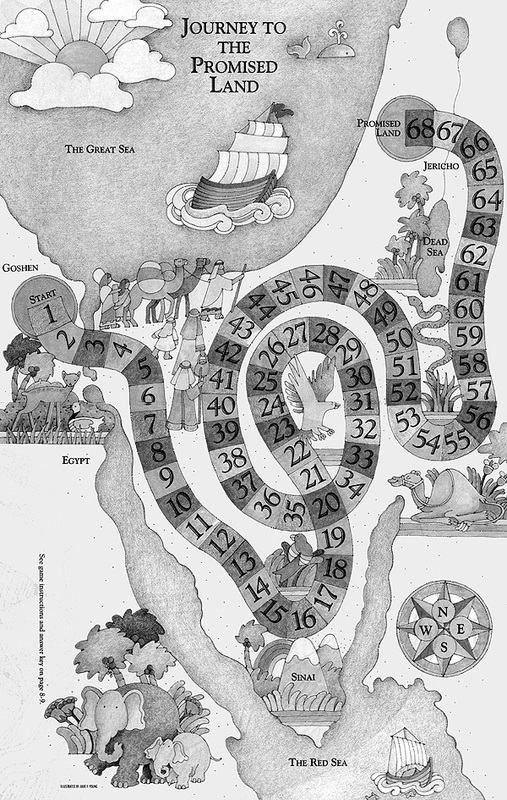Article 4: Figuring Out How to Reach the Promised Land
In this fourth article in the series “How to Make Good Strategy”, I am going to back up a bit and make sure I have been clear on what we are trying to achieve when we try and understand “what is going on here” – which is what we are doing in the diagnosis.
Strategic thinking involves three things, according to the recent article by Michael Birshan and Jayanti Kar (www.mckinseyquarterly.com/Becoming_more_strategic_Three_tips_for_any_executive_2992):
So if you go back to the questions I asked in the previous article in which I was looking at diagnosing your internal environment (http://leadershipsolutions.co.za/general/the-foundation-of-strategy-diagnosis/) you will see that I am asking you to develop and refine your understanding of what is going on internally. You need to become expert in how things work and what is happening. Asking those questions will help you do that. The answers to those questions will also lead you to other questions that must be answered.
When you do strategy, essentially you are identifying the obstacles that stand in the way of your reaching the promised land – whatever the “promised land” may be for you. Between where you stand and the promised land there are dangers at every turn – you must cross rivers infested with crocodiles; you must climb craggy mountains; cross glaciers and negotiate crevasses; fight off lions and polar bears; and defend yourself against marauding tribes. The resources you have at your disposal are a machete, a canoe, a friend who has some mountain-climbing experience and a friendly tribe that is on the other side of the next mountain. You have three months to get there – so you have some, but not much, time. Your strategy will consist of making some decisions about how you will and will not use the resources at your disposal in order to reach the promised land and, once you’ve made those decisions, mapping out a plan to get there.
In this fourth article in the series “How to Make Good Strategy”, I am going to back up a bit and make sure I have been clear on what we are trying to achieve when we try and understand “what is going on here” – which is what we are doing in the diagnosis.
Strategic thinking involves three things, according to the recent article by Michael Birshan and Jayanti Kar (www.mckinseyquarterly.com/Becoming_more_strategic_Three_tips_for_any_executive_2992):
- You need to understand how things work in your company, your industry and your clients’ companies and industries. This requires that you educate yourself, that you ask questions, that you are constantly refining your understanding of how things work.
- You need to become adept at spotting potential disruptors in your industry (and your clients’ industries) – these are things that could change the game by either creating new opportunities or by posing new risks that you need to acknowledge and face.
- You need to become skilled at being persuasive in recommending strategies to address what you know from 1 and 2.
So if you go back to the questions I asked in the previous article in which I was looking at diagnosing your internal environment (http://leadershipsolutions.co.za/general/the-foundation-of-strategy-diagnosis/) you will see that I am asking you to develop and refine your understanding of what is going on internally. You need to become expert in how things work and what is happening. Asking those questions will help you do that. The answers to those questions will also lead you to other questions that must be answered.
When you do strategy, essentially you are identifying the obstacles that stand in the way of your reaching the promised land – whatever the “promised land” may be for you. Between where you stand and the promised land there are dangers at every turn – you must cross rivers infested with crocodiles; you must climb craggy mountains; cross glaciers and negotiate crevasses; fight off lions and polar bears; and defend yourself against marauding tribes. The resources you have at your disposal are a machete, a canoe, a friend who has some mountain-climbing experience and a friendly tribe that is on the other side of the next mountain. You have three months to get there – so you have some, but not much, time. Your strategy will consist of making some decisions about how you will and will not use the resources at your disposal in order to reach the promised land and, once you’ve made those decisions, mapping out a plan to get there.
Whenever we are required to think strategically, no matter what the issue (promised land), we are doing the same thing. The keys to thinking strategically are:
- Be clear on what you want to achieve (the promised land);
- Be clear on where you are starting, and what you are starting with in terms of the resources you have at your disposal – this is the internal analysis component of your diagnosis;
- Ascertain what challenges you have to overcome in order to reach the promised land, and what support you might have in overcoming these challenges – this is the external analysis compnent of your diagnosis;
- Decide how you will throw your resources at overcoming those challenges – make it a policy that you will not throw them atanything else. This is the process of deciding on a guiding policy.
- Decide what you need to do first, and then, and then, and so on until you reach the promised land – create a coherent plan that is informed by your guiding policy.
I hope that I am demystifying this process of making strategy. It is not complicated – but it can be very complex. At least one purpose of making strategy is to reach the simplicity that is to be found on the other side of complexity – but you have to go through the complexity in order to get there.
In the next article, I will go back to the analysis.




